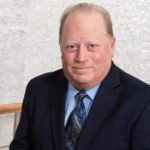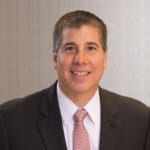Compounding the Fraud: Questionable Billing by Pharmacies
July 6, 2021 | Evan H. Krinick | Michael A. Sirignano |As the COVID-19 pandemic was taking hold last April, the Manhattan U.S. Attorney filed a lawsuit against FPR Specialty Pharmacy LLC and Mead Square Pharmacy, Inc., and their owners, Christopher Casey and William Rue, alleging that they had submitted fraudulent claims for reimbursement to federal healthcare programs for compounded prescription drugs in violation of the False Claims Act (FCA) and the Anti-Kickback Statute.
Specifically, the government contended that, from 2011 through 2015, the pharmacies had dispensed a compounded prescription analgesic cream known as Focused Pain Relief from their facility in Victor, New York, to patients around the country. According to the government’s complaint, many of the pharmacies’ patients were beneficiaries of federal healthcare programs such as TRICARE, Medicare, federal employee workers’ compensation programs overseen by the U.S. Department of Labor (DOL), and the Federal Employee Health Benefit Program.
The rules governing federal healthcare programs require pharmacies dispensing prescriptions to their members to be licensed with the appropriate state authorities to be able to request reimbursement for the cost of the medications. The government asserted that the pharmacies had violated the FCA by dispensing and requesting reimbursement for hundreds of prescriptions of Focused Pain Relief dispensed to federal healthcare program beneficiaries in states where the pharmacies were not licensed to operate by the appropriate state authorities, and by failing to disclose that they were not licensed.
Moreover, according to the authorities, the pharmacies also had violated the FCA by billing federal healthcare programs for prescriptions dispensed in states in which they had obtained their state licenses under false pretenses, including by failing to inform state authorities that they had previously dispensed drugs in the states without a license and by failing to disclose Casey’s criminal history on pharmacy license applications.
The pharmacies allegedly violated the Anti-Kickback Statute by engaging in two separate illegal practices: Regularly charging federal healthcare program beneficiaries co-payments substantially below program requirements (which often exceeded $100) to induce them to purchase expensive prescriptions of Focused Pain Relief, for which the federal healthcare programs paid hundreds and sometimes thousands of dollars each, and often paying illegal kickbacks to their sales representatives in the form of sales commissions tied to the number of Focused Pain Relief prescriptions written by the physicians to whom each representative marketed.
At the time the government filed its complaint, it also announced that it had reached a settlement with the defendants of its civil healthcare fraud claims. As part of the settlement, the defendants agreed to pay a total of $426,000. They also admitted to and accepted responsibility for the conduct alleged in the government’s complaint. See https://www.justice.gov/usao-sdny/pr/manhattan-us-attorney-announces-settlement-fraudulent-billing-and-kickback-lawsuit.
The Compounding Problem
That the government’s action against FPR and Mead and their owners involved compounded prescription drugs should not necessarily be surprising. Indeed, five years ago both the Office of Inspector General (OIG) of the U.S. Department of Health and Human Services (HHS) and the U.S. Postal Service (USPS) OIG issued reports highlighting growing concerns over compounded products. See “High Part D Spending on Opioids and Substantial Growth in Compound Drugs Raise Concerns,” HHS OIG Data Brief, OEI-16-00290 (June 2016), available at https://oig.hhs.gov/oei/reports/oei-02-16-00290.asp; “Worker’s Compensation Compound Drug Costs, Management Advisory, Report No. HR-MA-16-003” (March 14, 2016), available at https://www.uspsoig.gov/sites/default/files/document-library-files/2016/HR-MA-16-003.pdf. When the FPR/Mead action and the two five-year-old reports are combined with an even more recent HHS OIG report, see “Questionable Billing For Compounded Topical Drugs in Medicare Part D, OEI-02-16-00440 (August 2018), available at https://oig.hhs.gov/oei/reports/oei-02-16-00440.asp, it is clear that healthcare fraud involving compounded products remains a significant concern for federal healthcare programs, as well as for private insurance plans – no more so than in the New York area.
What Are Compounded Drugs?
Compounded drugs are customized medications that are tailored to the needs of individual patients. Pharmacists and physicians create these medications by combining, mixing, or altering drug ingredients. A patient may need a compounded drug if no commercially available product meets the patient’s needs. For instance, a patient who is allergic to an ingredient in a commercially-available drug may require a special formulation to eliminate that ingredient, or a patient with swallowing difficulties may require a liquid instead of a commercially-available pill. Compounded drugs can take many forms, the most common of which are topical drugs (including gels, ointments, and creams, such as Focused Pain Relief), intravenous drugs, oral drugs, and injectable drugs.
The Food and Drug Administration (FDA) continues to highlight risks associated with compounded drugs, including that they do not have the same safety, quality, and effectiveness assurances as approved drugs and that the unnecessary use of compounded drugs unnecessarily exposes patients to potentially serious health risks. See “Compounding and the FDA: Questions and Answers,” available at https://www.fda.gov/drugs/human-drug-compounding/compounding-and-fda-questions-and-answers.
The OIG Brief
While acknowledging the FDA’s safety concerns about compounded drugs, the 2016 OIG data brief emphasized other problems – in particular, fraud and abuse stemming from the “dramatic” increase in Part D spending for compounded drugs over the prior decade, particularly for topical medications. (Part D is the optional prescription drug benefit for Medicare beneficiaries.)
According to the OIG, by 2015, Part D spending on compounded drugs was seven times what it was in 2006, and between 2006 and 2015, Part D spending for compounded drugs climbed from $70.2 million to $508.7 million, an increase of 625 percent. Moreover, the OIG reported, the growth in spending for compounded drugs far outpaced the growth in spending for all Part D drugs (167 percent), with growth in the number of beneficiaries receiving compounded drugs (154 percent) far outpacing growth in the number of beneficiaries receiving Part D drugs (76 percent).
Significantly, according to the 2016 OIG report, Part D spending for compounded topical drugs increased 3,466 percent over the prior decade. The OIG stated that this large growth raised concerns that some compounded drugs “may not have been medically necessary or may not have been dispensed.”
The OIG analysis included a geographical breakdown that observed that several areas of the country stood out as having unusually high spending for compounded topical drugs. It noted that spending for compounded topical drugs per beneficiary in New York City was more than three times the national average and that the number of beneficiaries receiving compounded topical drugs was two and one-half times higher in New York than the national average.
Further, the 2016 study found that New York accounted for the largest proportion of the overall Part D spending for compounded topical drugs: Eighteen percent of all Part D spending for compounded topical drugs was in New York, although New York had only six percent of the country’s Part D beneficiaries.
In the OIG’s opinion, the “extremely high rate of growth” raised questions as to whether all of the drugs were medically necessary or even dispensed to the beneficiary – concerns that were buttressed, it said, by a growing number of fraud cases.
Workers’ Compensation
The USPS OIG’s 2016 advisory also highlighted concerns about compounded drugs, but in the workers’ compensation space. The advisory noted that the USPS’s workers’ compensation compounded drug costs escalated to over $98.7 million for 2015, a $68.6 million increase over 2014. During the same period, the USPS’s administrative expenses for compounded drugs increased to $5.1 million, a $3.6 million increase. Moreover, the OIG estimated that the USPS incurred over $81.8 million in excessive compounded drug costs and nearly $4.1 million in excessive administrative fees for fiscal years 2014 and 2015.
Interestingly, the OIG determined that although the number of paid medical cases had stayed relatively stable at about 100,000 annually for the preceding five years, compounded drug costs had increased 1,924 percent, growing from about $5 million to about $100 million from 2011 to 2015. Put differently, in 2015, compounded drug prescriptions increased to 34 percent (from eight percent in 2011), and to 53 percent (from six percent in 2011) of all prescription costs.
“Questionable Billing”
The 2018 report by the HHS OIG was perhaps even more direct about the potential fraud related to compounded drugs than either of the two 2016 studies, as can be seen from its title: “Questionable Billing for Compounded Topical Drugs in Medicare Part D.”
The OIG said that it prepared this 2018 report as a result of a “dramatic increase in Medicare Part D spending for compounded topical drugs, the emergence of fraud cases, and safety concerns.”
In this study, the OIG analyzed the billing of 2,388 pharmacies, amounting to 93 percent of all compounded topical drugs in 2016, and it concluded that 547 pharmacies had questionable billing for those drugs in 2016, “indicating possible fraud or abuse related to compounded topical drugs in 2016.” These pharmacies billed Part D a total of $300.3 million for compounded topicals in 2016 – more than 90 percent of all Part D billing for these drugs nationwide.
The OIG found that the New York area had 81 pharmacies with questionable billing. Together, these pharmacies billed $67.6 million for compounded topical drugs, which was 21 percent of the total amount billed in the country. The majority of the pharmacies (51 of 81) each billed for what the OIG characterized as “an extremely high number of compounded topicals from a single prescriber.”
The OIG report also stated that 124 prescribers raised “concern” because each of them had ordered more than $250,000 of compounded topicals dispensed by the pharmacies the OIG identified as having questionable billing, for a total of $73.1 million. This amount accounted for almost a quarter – 23 percent – of all Part D spending for compounded topical drugs in 2016.
According to the OIG, the patterns it found “may indicate fraud, waste, and abuse.” They also “might include cases in which the beneficiaries’ or prescribers’ identification numbers were stolen or used without their knowledge to obtain drugs that were not needed or not even received by the beneficiaries.”
Conclusion
Compounding fraud – and its costs to federal healthcare programs and to private insurance plans – remains rampant in New York and across the country, five years after the first reports discussed in this column and several years following the HHS OIG’s 2018 report. In recent months, the Justice Department has continued to file complaints (see, e.g., “Six Texas Pharmacy Owners and Marketers Charged in $14 Million Kickback Scheme,” available at https://www.justice.gov/opa/pr/six-texas-pharmacy-owners-and-marketers-charged-14-million-kickback-scheme) and obtain guilty pleas (see, e.g., “Compounding Pharmacy Mogul Pleads Guilty to Conspiracy to Commit Health Care Fraud and Conspiracy to Commit Money Laundering,” available at https://www.justice.gov/opa/pr/compounding-pharmacy-mogul-pleads-guilty-conspiracy-commit-health-care-fraud-and-conspiracy), and convictions (see, e.g., “‘Compound King’ Convicted in $21 Million Health Care Fraud Scheme,” available at https://www.justice.gov/opa/pr/compound-king-convicted-21-million-health-care-fraud-scheme). Much more, however, needs to be done, both by the government and by insurance carriers, to combat this pervasive and costly fraud.
Reprinted with permission from the July 6, 2021, issue of the New York Law Journal©, ALM Media Properties, LLC. Further duplication without permission is prohibited. All rights reserved.




